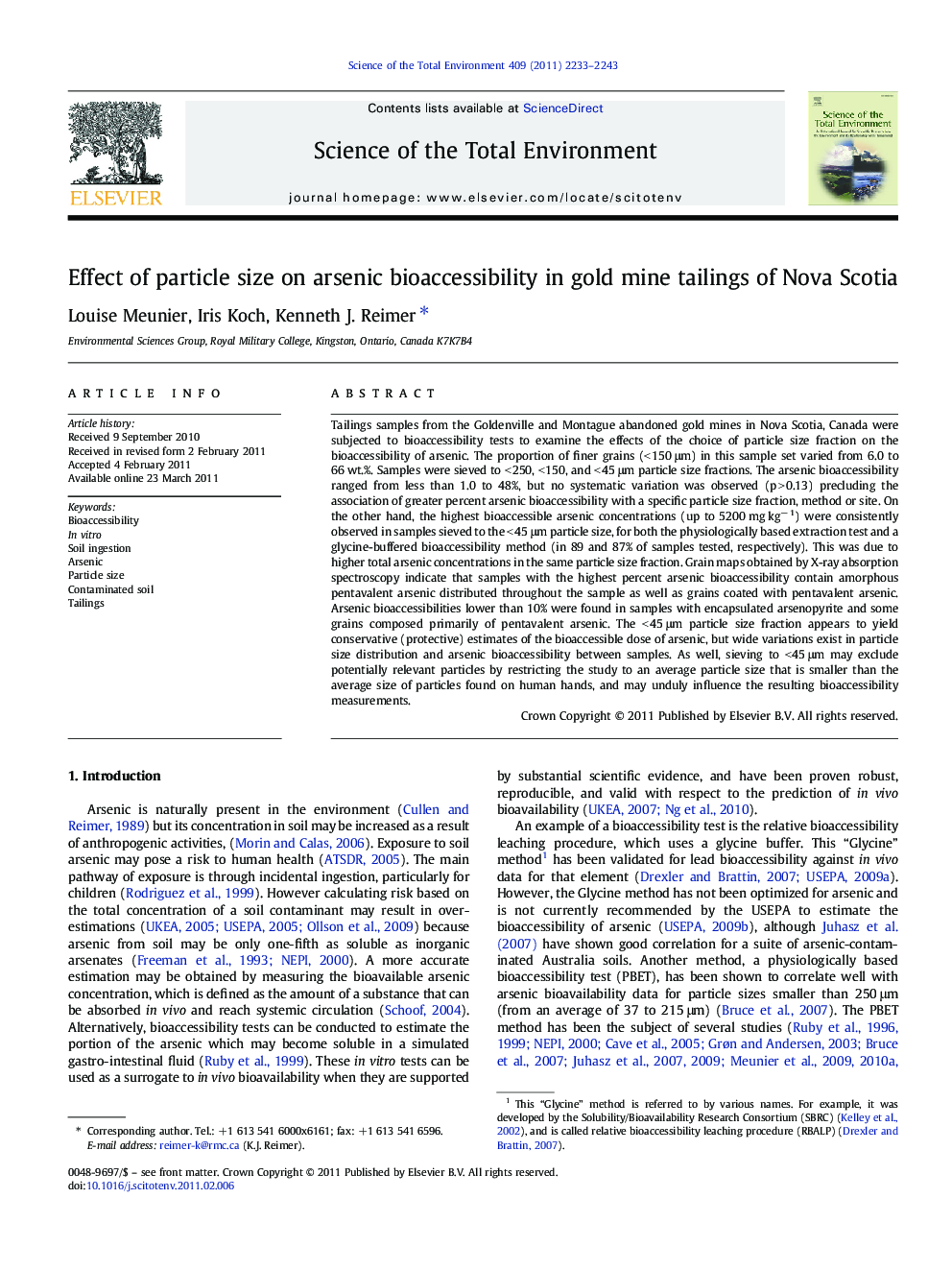| Article ID | Journal | Published Year | Pages | File Type |
|---|---|---|---|---|
| 4430490 | Science of The Total Environment | 2011 | 11 Pages |
Tailings samples from the Goldenville and Montague abandoned gold mines in Nova Scotia, Canada were subjected to bioaccessibility tests to examine the effects of the choice of particle size fraction on the bioaccessibility of arsenic. The proportion of finer grains (< 150 μm) in this sample set varied from 6.0 to 66 wt.%. Samples were sieved to < 250, < 150, and < 45 μm particle size fractions. The arsenic bioaccessibility ranged from less than 1.0 to 48%, but no systematic variation was observed (p > 0.13) precluding the association of greater percent arsenic bioaccessibility with a specific particle size fraction, method or site. On the other hand, the highest bioaccessible arsenic concentrations (up to 5200 mg kg− 1) were consistently observed in samples sieved to the < 45 μm particle size, for both the physiologically based extraction test and a glycine-buffered bioaccessibility method (in 89 and 87% of samples tested, respectively). This was due to higher total arsenic concentrations in the same particle size fraction. Grain maps obtained by X-ray absorption spectroscopy indicate that samples with the highest percent arsenic bioaccessibility contain amorphous pentavalent arsenic distributed throughout the sample as well as grains coated with pentavalent arsenic. Arsenic bioaccessibilities lower than 10% were found in samples with encapsulated arsenopyrite and some grains composed primarily of pentavalent arsenic. The < 45 μm particle size fraction appears to yield conservative (protective) estimates of the bioaccessible dose of arsenic, but wide variations exist in particle size distribution and arsenic bioaccessibility between samples. As well, sieving to < 45 μm may exclude potentially relevant particles by restricting the study to an average particle size that is smaller than the average size of particles found on human hands, and may unduly influence the resulting bioaccessibility measurements.
Research highlights► Percent arsenic bioaccessibility for tailings samples ranged from 1.0 to 48%. ► Higher percent bioaccessibility is associated with amorphous arsenic coating grains. ► Arsenopyrite and encapsulated arsenic yield lower percent bioaccessibility. ► Percent bioaccessibility did not vary significantly between particle size fractions. ► Sieving to < 45 μm may exclude relevant particles with more bioaccessible arsenic.
